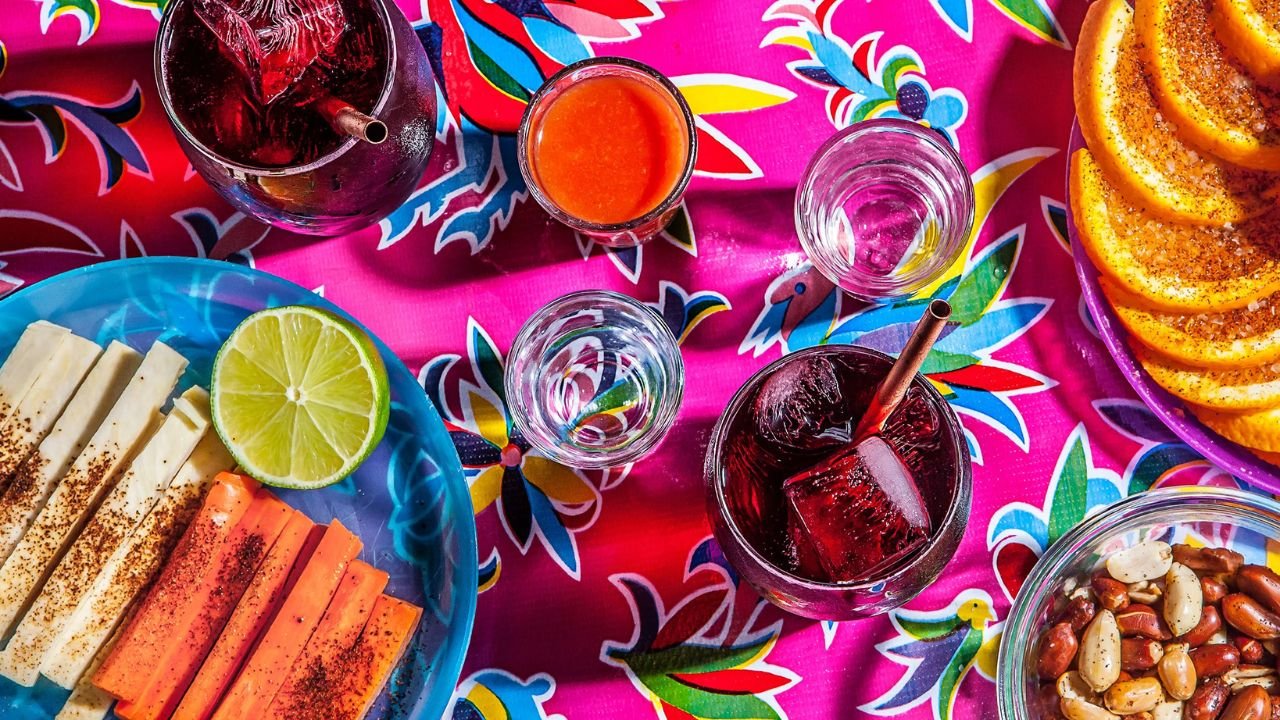Mexico’s traditional spirit “mezcal” is no longer confined to its borders. Its taste and reputation is growing rapidly in cities like London. The spirit that was once only tasted with a slice of orange and sal de gusano (powder of chili, sea salt and dried agave worms) is now being paired with food in high-end restaurants, just like wine.
Popularity and usage of mezcal in London
The famous London restaurant KOL, which recently received a Michelin star, includes mezcal pairings on its menu, just like wine. Even bars like Hacha – located in Brixton and Dalston – serve special snacks with flights of mezcal to help customers better understand its combination with the taste. Experiments like these show that interest in mezcal is growing rapidly in the UK.
“The agave craze hasn’t peaked yet,” says Matt Varona, beverage manager at MJMK Hospitality, and believes London is experiencing a “Mexican moment” that has made people more aware of the food-drink combination.
The Challenges and Possibilities of Pairing
However, pairing spirits with food is not as easy. “Mezcal has a higher alcohol content, which gives a stronger burn, whereas wine has a fruity, acidic texture that makes this easier to match,” explains Michael De Palma, operations director at Temper Restaurants. Still, mezcal and wine have one similarity – the quality of both is closely linked to the terroir, the taste and smell of the place where they grow.
Mezcal’s Terroir and the Influence of Agave
The diverse topographical areas in Mexico that are arid, some coastal and some tropical also give mezcal its flavour. A co-founder of Hacha Bars, Deano Moncrief, comes up with the following statement: mezcal is among the strongest spirits in the world and the impact of terroir is recognized most of all there.
Also, the variation of agave in which the mezcal is produced also contributes in a large manner to the taste. The most widespread Espadn type is mild and herby in taste, whereas mezcal using rarer agave (such as Tobal) is much sweeter, spicy and smoky.
Depth of Smoke and Pairing with Food
Mezcal is characterized by its smoky flavor, which comes from the traditional method of cooking the agave. But this smoke is not uniform – some bottles have a cigar-like flavor, some a sweeter smoke, others a heavy woody one. So when you pair mezcal with a dish, keep in mind its smoky intensity. Moncrief says, “If the mezcal is more smoky, it’s best to serve it at the end of the meal so it doesn’t overpower the first flavor.”
How to get started: beginner tips
Now let’s talk about which mezcals to serve with which foods:
Espadín
This is the most common type of mezcal with herbal and citrus notes. It pairs well with dishes like vegetables or seafood — especially ceviche — with a mild smoky flavor. The Lost Explorer Espadín is recommended with ceviche or fish.
Tepeztate
It has a unique, earthy aroma and tropical flavors that can sometimes taste “cheesy.” It pairs well with bolder cheeses like blue cheese.
Tobaziche
It has herby and green flavors that pair well with fish dishes like tuna or salmon. The combination of a greasy or green mezcal and a strong fish flavor can be very impressive.
Tobalá
It is referred to as the King of Agave since it is sweet and spicy, and contains a flavor of smoke. It is accompanied with red meat, spicy tomato sauce and dark chocolate. It has vanilla and cocoa overtures which go well with a chocolate mousse or a coffee dessert.
Cupreata
This agave, which has tropical and earthy flavor, was cultivated in the state of Guerrero. It is delicious with sweet vegetables such as squash and with the smokey notes of chiles. A great example is KOL restaurant which serves squash-flavoured Nieve (Mexican fruit sorbet) along with chili oil of Chiltepin chili.
There’s an art to tasting mezcal
There’s a saying in Mexico – “Treat women and mezcal like kisses.” This means savouring it slowly, sip by sip, and enjoying it to the fullest. Adriana Cavita, a renowned Mexican chef in London, advises that “sipping less burns and allows the flavours to unfold.”
Conclusion
Mezcal is not just a drink, but an experience – with its textures, regional flavours, and different agave species making each bottle unique. Pair it with the same sensitivity and sensitivity as wine, and you’ll find it doesn’t just complement food, it lifts its spirit.
If you have limited yourself to just tasting it till now, now is the time to go on a new taste journey by combining it with your food. The magic of mezcal is only fully revealed when it is served with the right dish – slowly, respectfully and with true taste.
If you liked this article and want to know more about mezcal, let me know – I will tell you about its history, I can also make a detailed article on the process of making it or other recipe suggestions.
